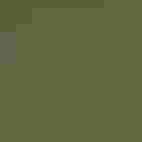Prairie Warbler
At a Glance
Not a bird of open prairies, this warbler nests mainly in young second growth scrub and densely overgrown fields in eastern North America. Such habitats are often temporary, and colonies may shift around from year to year. In Florida, more permanent populations are found in coastal mangroves. In all of these sun-drenched habitats, the thin buzzy song of the male seems suited to the glare of hot summer days. Prairie Warblers usually stay low, moving about actively in the brush and flicking their tails.
All bird guide text and rangemaps adapted from Lives of North American Birds by Kenn Kaufman© 1996, used by permission of Houghton Mifflin Harcourt Publishing Company. All rights reserved.
Category
Perching Birds, Wood Warblers
IUCN Status
Least Concern
Habitat
Fields, Meadows, and Grasslands, Forests and Woodlands, Shrublands, Savannas, and Thickets
Region
California, Eastern Canada, Florida, Great Lakes, Mid Atlantic, New England, Plains, Southeast, Texas
Behavior
Direct Flight, Flitter
Population
3.600.000
Range & Identification
Migration & Range Maps
Some Florida birds may be permanent residents. In much of range, southward migration begins by late summer, but a few birds may linger quite late in fall.
Description
5" (13 cm). Olive above, bright yellow below, with two very dull wing-bars. Best mark is face pattern, sharp in adult male, fainter in female and young. Bobs its tail up and down almost constantly.
Size
About the size of a Sparrow
Color
Black, Green, Red, Yellow
Wing Shape
Rounded
Tail Shape
Notched, Square-tipped
Songs and Calls
Buzzy zee-zee-zee, up to 10 rapidly ascending notes.
Call Pattern
Flat, Rising
Call Type
Buzz, Chirp/Chip, Hi
Habitat
Brushy slashings, bushy pastures, low pines. Breeds in dry old clearings, edges of forest, and sandy pine barrens with undergrowth of scrub oaks, especially on ends of slopes and ridges. Likes thick second-growth of hickory, dogwood, hazel, or laurel with blackberry vines. In Florida, breeds in mangrove swamps. Found in flat, grassy lands with scattered trees and bushes in the South in the winter.
Sign up for Audubon's newsletter to learn more about birds like the Prairie Warbler
Behavior
Eggs
4, sometimes 3-5. Off-white, with brown spots concentrated at larger end. Incubated by female for usually 12 (11-14) days. Commonly parasitized by cowbirds.
Young
Fed by both parents; leave the nest at 8-11 days. Fledglings may be divided by parents, each adult caring for part of brood for 40-50 days until young are independent. Often 2 broods per season.
Feeding Behavior
Forages mainly by taking insects while perched or hopping on branches or twigs. Also catches flying insects in mid-air, and takes insects from undersides of leaves (and spiders from their webs) while hovering. Will also feed occasionally by hanging upside down from tips of branches or by flying down to pick up insects from ground.
Diet
Mostly insects. Feeds on many insects including caterpillars, moths, tree crickets, lacewings, true bugs, beetles, ants, flies; also spiders and millipedes. Also eats a few berries, and occasionally sap from holes drilled in trees by sapsuckers. Nestlings are fed mostly caterpillars.
Nesting
Some males have more than one mate. Often breeds in loose colonies. Males return year after year to the same breeding territory, but females often do not. Males utter a loud, harsh rattle during fights with other males. During courtship, male performs slow butterfly-like display flights; also chases female. Nest: Placed in site selected by female. Usually in a tree (such as pine, cedar, sweet-gum, oak), 1-45' above the ground. In coastal Florida, usually in mangroves. Nest (built by female) an open cup, made of densely felted plant materials such as plant down, and lined with animal hair.
Conservation
Conservation Status
Surveys show declining numbers in recent decades. Over much of range, requires brushy areas growing up after clearing or fires, and disappears as forests mature. Also hurt by cowbird parasitism.
Climate Threats Facing the Prairie Warbler
Choose a temperature scenario below to see which threats will affect this species as warming increases. The same climate change-driven threats that put birds at risk will affect other wildlife and people, too.









